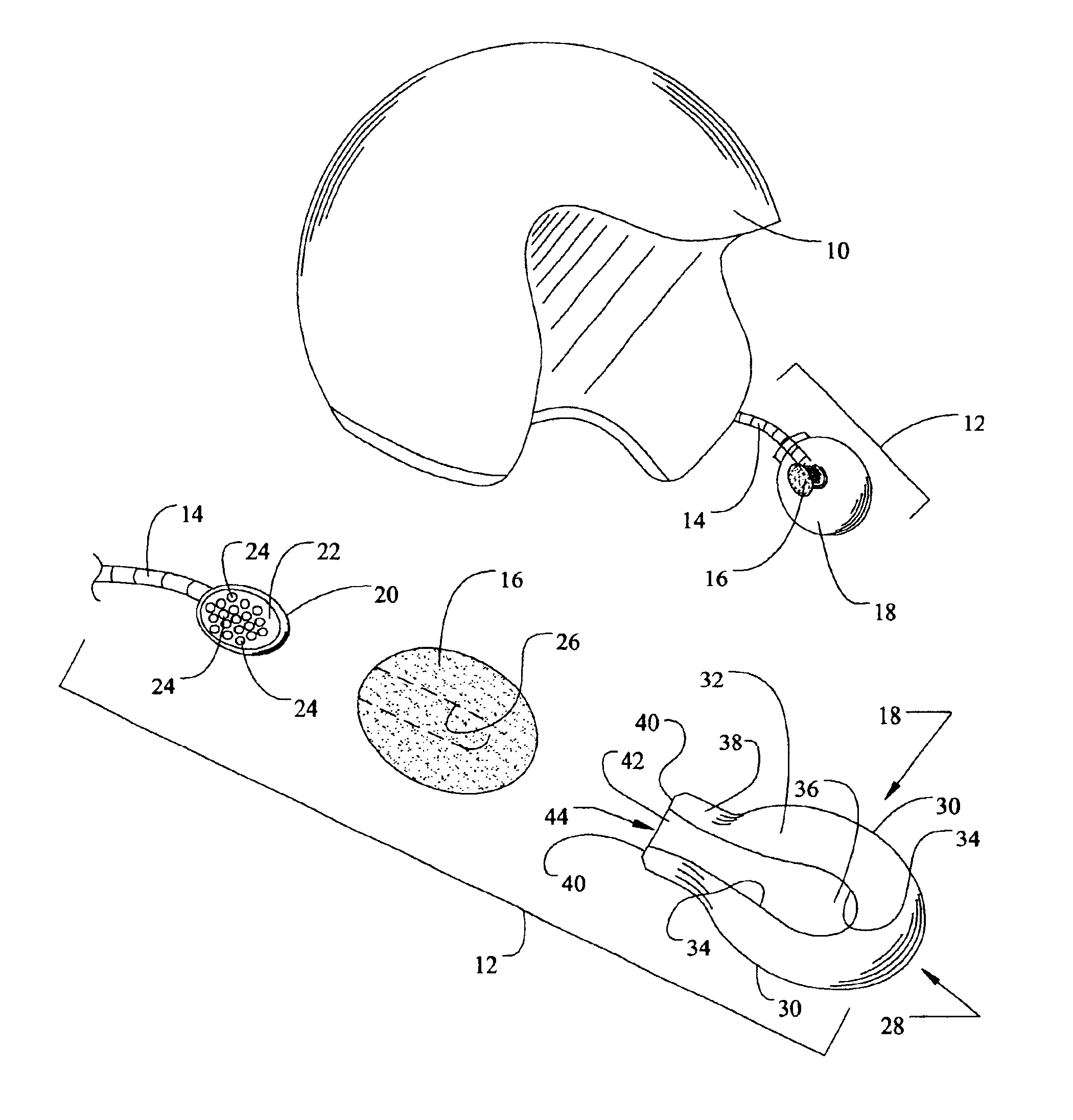Microphone shroud and related method of use
a microphone and shroud technology, applied in the field of microphone shrouds and shrouds, can solve the problems of foam deterioration, noise adversely affecting the performance of the microphone in terms of sound quality transmission, and the general exposure of the microphone to extremely harsh environmental conditions
- Summary
- Abstract
- Description
- Claims
- Application Information
AI Technical Summary
Benefits of technology
Problems solved by technology
Method used
Image
Examples
Embodiment Construction
[0028]Generally, a microphone shroud in accordance with the present invention is shown in the Figures in conjunction with a typical helmet mounted headset including a microphone. The term shroud is basically synonymous with the terms enclosure, deflector, cover, boot, body, baffle, etc.
[0029]Referring now in detail to the Figures, there is shown in FIG. 1 a ¾ open-faced helmet 10 having a microphone assembly 12 attached thereto. The microphone assembly 12 is part of a complete headset (not entirely shown) that includes earphones positioned inside the helmet 10. A complete headset is typified by the AeroMike® III helmet headset available from the J&M Corporation for between $120 and $220. The microphone assembly 12 generally includes a flexible boom 14, a microphone (not shown) attached to and terminating the flexible boom, a windsock 16, and a shroud 18.
[0030]As specifically shown in FIG. 2, the microphone assembly 12 also includes a microphone 20 that has a back surface 22 with ope...
PUM
 Login to View More
Login to View More Abstract
Description
Claims
Application Information
 Login to View More
Login to View More - R&D
- Intellectual Property
- Life Sciences
- Materials
- Tech Scout
- Unparalleled Data Quality
- Higher Quality Content
- 60% Fewer Hallucinations
Browse by: Latest US Patents, China's latest patents, Technical Efficacy Thesaurus, Application Domain, Technology Topic, Popular Technical Reports.
© 2025 PatSnap. All rights reserved.Legal|Privacy policy|Modern Slavery Act Transparency Statement|Sitemap|About US| Contact US: help@patsnap.com


